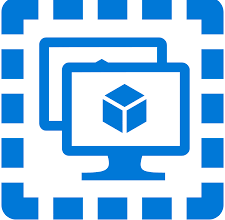
What is a Virtual Machine
Explaining the pros and cons of Virtual Machines.
Shane Brown
2/15/20253 min read


Demystifying Virtual Machines: Why, How, and What to Watch Out For
Virtual machines (VMs) have become an essential part of modern computing, allowing you to run multiple operating systems on a single physical computer. Whether you’re a hobbyist exploring Linux for the first time or a developer needing a robust sandbox environment, VMs can help you do more, faster, and more securely. In this post, we’ll examine the pros and cons of using virtual machines, share some handy tips for beginners, and finish off with the “nerd joke of the day.”
What is a Virtual Machine?
A virtual machine is an emulated computer system that runs within a host machine’s operating system. You can think of it as a computer inside your computer. This setup allows you to install and run an entire operating system in isolation, without affecting your main (host) operating system.
Pros of Using Virtual Machines
Isolation and Security
Sandbox Environment: Virtual machines create a contained environment, so if you mess up an OS or contract malware inside the VM, your host system remains safe.
Testing Software: Ideal for testing potentially risky applications without risking your primary OS.
Resource Efficiency
Multiple OS Environments on One Machine: No need for multiple physical devices; you can run Windows, Linux, and other OSes side by side on the same PC.
Dynamic Resource Allocation: Adjust CPU cores, RAM, and storage on the fly based on your needs.
Convenience and Flexibility
Snapshots and Clones: Take a snapshot of your VM before an update or major change, so you can revert quickly if something goes wrong.
Portability: You can copy or move the entire VM to another machine, which can be a huge time-saver.
Cost-Effective for Learning
Experiment with Different OSes: Learn Linux, set up a BSD environment, or test the latest version of Windows without needing extra hardware.
Cons of Using Virtual Machines
Performance Overhead
Slower Than Native Install: Because you’re running an OS on top of another OS, VMs can be slower, especially if your host machine isn’t powerful.
Resource Demands
High CPU, RAM, and Storage Requirements: You’ll need enough horsepower to support both the host OS and the guest OS.
Hardware Compatibility
Limited Access to Host Hardware: Some specialized hardware might not be fully accessible or supported in a VM environment (e.g., certain graphics cards, USB devices).
Complexity
Learning Curve: Setting up and managing virtual networks, hypervisors, or pass-through devices can be intimidating for first-timers.
Tips and Tricks for New Users
Choose the Right Hypervisor
Popular choices include VirtualBox, VMware Workstation Player, and Hyper-V (Windows-only). Research each to find the one best suited to your needs.
Allocate Resources Wisely
RAM Allocation: Make sure to leave enough memory for your host OS. If your host has 8GB of RAM, consider assigning 2-4GB to your VM.
CPU Cores: If you have multiple cores, allocate enough to the VM but retain some for the host to ensure smooth overall performance.
Use Snapshots
Before Major Changes: Taking a snapshot before installing new software or updating the OS can save you headaches if something breaks.
Multiple Checkpoints: Keep snapshots at critical stages (e.g., after a fresh install, major updates, etc.).
Enable Virtualization in BIOS/UEFI
Most modern CPUs support hardware virtualization (Intel VT-x or AMD-V). You may need to enable it in your system’s BIOS or UEFI for best performance.
Networking Modes
NAT Mode: Easiest to configure; the VM shares the host’s IP for internet connectivity.
Bridged Mode: The VM appears on the local network as a separate device. This is handy for testing network configurations.
Security Best Practices
Keep Guest OS Updated: Even though it’s isolated, a compromised VM can still be a gateway if not properly managed.
Install Antivirus (If Needed): Some OSes might not need it, but on Windows guest OSes, consider installing security software.
Recommended Resources
Official Hypervisor Documentation
VMware Player Docs
Community Forums and Guides
VirtualBox Community Forum
VMware Community Forums
Tutorial Websites
Linux Handbook on VMs
How-To Geek: VirtualBox Guides
Nerd Joke of the Day
Q: Why did the hypervisor bring a ladder to the data center?
A: Because it heard the servers were “highly virtualized”!
(Insert collective groan)
Whether you’re dabbling in new operating systems, testing software securely, or just keeping your main environment clutter-free, virtual machines are an invaluable tool. Remember to stay mindful of resource allocation, learn about snapshots, and keep an eye on security.
